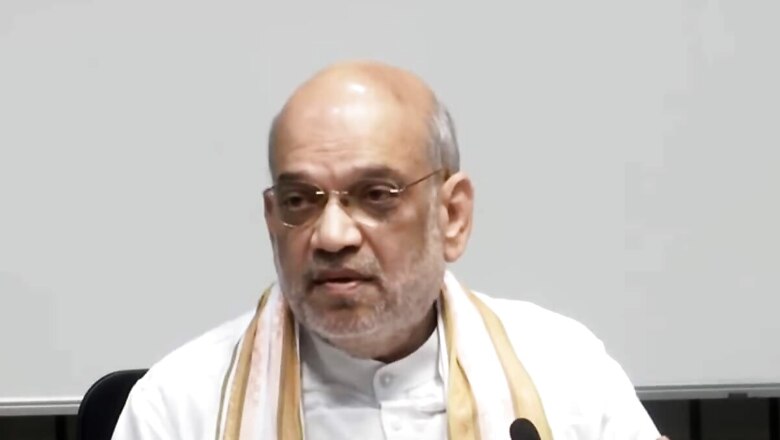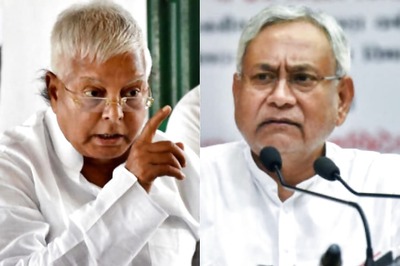
views
Strips of medicine, burnt umbrellas, scattered pots and pans, and empty cartridges are all that remain of the Naxal camp in Abujhmad. 31 alleged Naxalites were gunned down here two days ago, the highest number of casualties inflicted on CPI (Maoist) so far.
The deceased included Neeti, one of the senior women People’s Liberation Guerrilla Army (PLGA) members. It is also being speculated that another senior Maoist leader Kamlesh was at this camp when the local police launched the operation. Together, the dead Naxals were worth Rs 1 crore 80 lakh, as per Chhattisgarh police who had announced rewards for any information about these dreaded guerillas.
18 men and 13 women Naxals were killed in the encounter.
The successful anti-Naxal operation became the focal point of a Left Wing Extremism review meeting called by union home minister Amit Shah on Monday.
‘Perfect coordination and intelligence key to operations’
Shah stressed on better inter-state coordination and sharing of good practices by model states. Telangana and Andhra Pradesh came in for special mention for their anti-Naxal blueprint.
The minister specifically referred to the Narayanpur Naxal encounter. He said the Chhattisgarh police, District Reserve Guard (DRG), and Bastar Battalion personnel successfully carried out the operation with excellent coordination and intelligence. “This Naxal eradication campaign is a great example of the state government’s strategy, intelligence, and cooperation of central forces,” he said.
Chhattisgarh chief minister Vishnu Deo Sai in his presentation explained how the state police force carried out the operation on the basis of accurate intelligence. Sai said that the operation was planned over months and specific intelligence helped carry out the plan without any casualties.
“The operation involved around 1,000 soldiers who surrounded the Gawari mountain within a radius of 15 km and killed 31 Naxals,” he said.
‘Naxal incidents down by more than 50%’
Data presented at the Naxal review meeting suggests that overall incidents of LWE violence have come down by more than 53% in the last few years.
The home ministry data said 194 Maoists have been killed in the last nine months, more than 800 Naxals have been arrested, and 738 have surrendered.
From the initial 96 Naxal-affected districts, the number has now come down to 42. Telangana chief minister A Revanth Reddy pointed out that new districts have been carved out for the last few years adding to the cumulative numbers of LWE-affected districts. “Out of these 42 districts, 21 are new. So if you look at the original LWE map, about 16 districts are affected by Naxal violence,” Shah said, agreeing with Reddy.
‘Offensive and not defensive approach’
The home minister said that the roadmap ahead for all the eight Naxal-affected states would be an offensive and not defensive approach. Area domination and new camps being set up will be the way forward. He also urged the states to aggressively pursue governance delivery to Naxal-affected areas.
“Zero tolerance against LWE and implementation of government schemes is our plan ahead. 2022 was the first year in three decades that less than 100 casualties happened in Naxal violence. The graph has gone down further in 2023 and 24. Budha Pahad, Chhakarbandha and many areas are Naxal-free. 65 per cent Naxal cadre has been reduced in Chhattisgarh,194 camps established, and 45 police stations ensured the security vacuum ended. Special forces have performed well. 12 helicopters are in place to evacuate injured soldiers,” the minister said.
He urged the states to collaborate with the National Investigation Agency to probe Naxal cases. Shah asked the directors general of police (DGPs) of Naxal-affected states to spend a night at the district headquarters of affected districts to gain first-hand insight into problem areas.
While chief ministers N Chandrababu Naidu, Nitish Kumar, and Hemant Soren skipped the meeting, Eknath Shinde, A Revanth Reddy, Vishnu Seo Sai, and Mohan Yadav attended along with union health minister JP Nadda. States raised concerns about road connectivity, funding, and infrastructure issues while the home minister set a target for better road, telephone, and financial connectivity for the LWE-affected pockets.



















Comments
0 comment